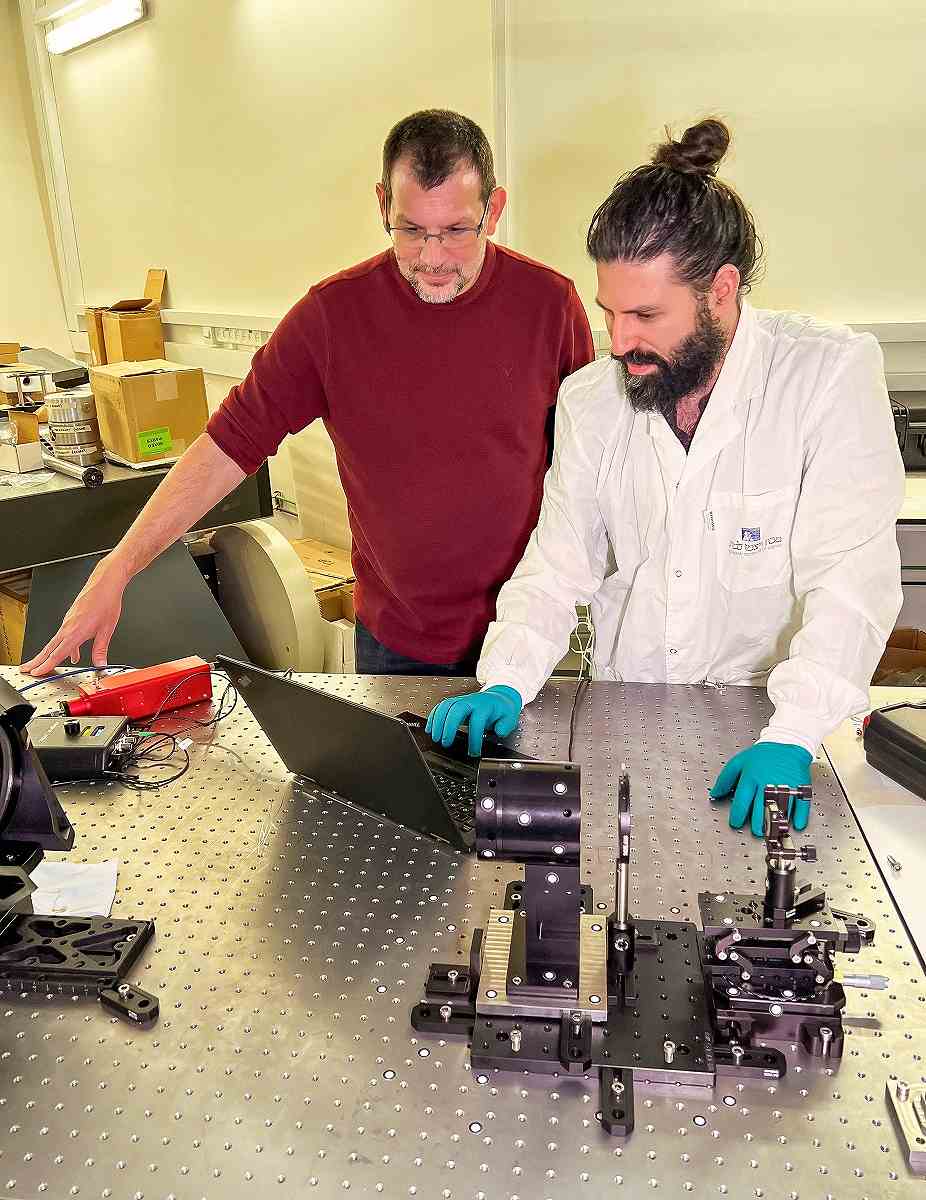
Astrophysicist Avishay Gal-Yam, left, and researcher Ido Irani look at a screen in their laboratory at the Weizmann Institute of Science in Rehovot, Israel, on March 27.
17:15 JST, April 10, 2024
REHOVOT, Israel (Reuters) — About 20 million years ago, in a galaxy not so far away, a large star exploded and sent elements representing the building blocks of life racing through space.
About a year ago, by chance, as the light it emitted reached Earth, a team of scientists in Israel observed it and for the first time collected data on the earliest stages from such an explosion, known as a supernova.
The picture they are putting together offers a detailed look at the origins of crucial elements around us, like the calcium in our teeth and the iron in our blood.
“We are actually seeing the cosmic furnace in which the heavy elements are formed, while they are being formed. We are observing it as it happens. This is really the unique opportunity,” Weizmann Institute of Science astrophysicist Avishay Gal-Yam said.
The findings, published on March 27 in the journal Nature, also indicate that the giant star, located in a neighboring galaxy called Messier 101, likely left behind a black hole after it exploded.
An amateur astronomer who happened to be watching that galaxy tipped off the researchers that something appeared to be occurring. They quickly focused their ground-based telescopes at the star and started documenting the early stages of the explosion.
The team, which included doctoral student and study lead author Erez Zimmerman, contacted NASA, which changed its schedule and aimed the Hubble Space Telescope at the supernova. This allowed early-stage observation of ultraviolet light from the explosion, which is blocked by the atmosphere and not picked up on Earth.
Along with tracking elements like carbon, nitrogen and oxygen blasted into space, the ultraviolet data showed a discrepancy between the star’s initial mass and the mass it ejected into space during the explosion.
“We suspect that after the explosion a black hole was left behind — a newly formed black hole that wasn’t there before. It’s the remnant of the explosion. A little bit of the mass of the star collapsed to the center and created a new black hole,” Gal-Yam said.
Black holes are extraordinarily dense objects with gravity so strong that not even light can escape.
Having created a sort of fingerprint of the supernova from start to finish, Gal-Yam said it could help scientists identify impending supernovas elsewhere.
“Perhaps we will be able in the next few years to say, not for all stars, but maybe for some of them, this star we think, we suspect, it’s going to explode,” Gal-Yam added. “That will be fantastic, and then we will know to be there and prepared.”
"Science & Nature" POPULAR ARTICLE
-

Genome Study Reveals Milestone in History of Cat Domestication
-

Big Leap in Quest to Get to Bottom of Climate Ice Mystery
-

Security Camera Footage Vulnerable to Outside Access; Investigation Finds 3,000 Pieces Exposed Online
-

Paws on Parade: Nairobi’s Dogs Dazzle at ‘Pawchella’
-

Japanese Eels Escape New Regulation in Vote at CITES Meeting, Avoiding Higher Prices for Dealers and Diners
JN ACCESS RANKING
-

Keidanren Chairman Yoshinobu Tsutsui Visits Kashiwazaki-Kariwa Nuclear Power Plant; Inspects New Emergency Safety System
-

Imports of Rare Earths from China Facing Delays, May Be Caused by Deterioration of Japan-China Relations
-

University of Tokyo Professor Discusses Japanese Economic Security in Interview Ahead of Forum
-

Japan Pulls out of Vietnam Nuclear Project, Complicating Hanoi’s Power Plans
-

Govt Aims to Expand NISA Program Lineup, Abolish Age Restriction

























